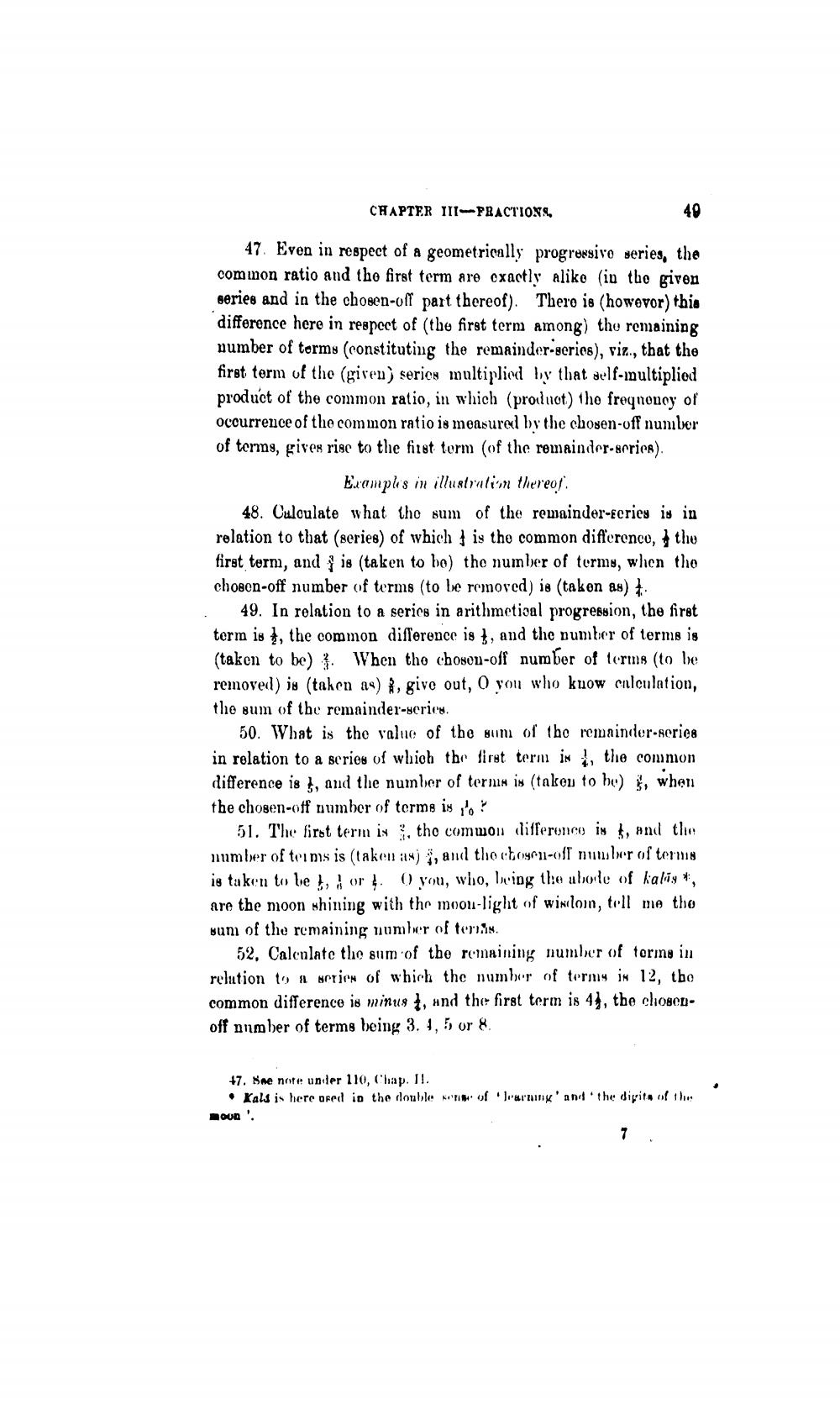________________
CHAPTER III-PRACTIONS
47. Even in respect of a geometrically progressivo series, the common ratio and the first term are exactly alike in the given series and in the chosen-off part thereof). Thero is (howevor) this difference here in respect of the first term among) the remaining number of torms (constituting the remainder-series), viz., that the first term of the (given) series multiplied by that self-multiplied product of the common ratio, in which (prodlnot) the freqnonoy of occurrence of the common ratio is measured by the chosen-off numibor of terms, gives rise to the first torm (of the remainder-series).
Examplis in illustration thereof: 48. Culoulate what tho sum of the remainder-Ecries is in relation to that (series) of which is the common differenco, the first term, and is (taken to bo) the number of terms, when the chosen-off number of terms (to be remored) is (takon as) . 49. In relation to a series in arithmetical progression, the first term is , the common difference is }, and the number of terms is (taken to be). When the choson-off number of forms to be removed) is taken as) , give out, you who kuow calculation, the sum of the remainder-series.
50. What is the value of the sum of the remainder-serica in relation to a series of which the first term in 1, the common difference is ļ, and the number of terms is taken to hu) , when the chosen-off number of terms is '?
51. The first term is , the common difference is $, and the number of teins is taken as), and tho choyan-off number of terug is taken to lie , or ļ. () you, who, being the abode of kaliy, are the moon shining with the moonlight of winilon, tell me tho sum of the remaining number of torn.
52. Calculate the sum of the remaining number of terms in relution to a series of which the number of terny in 12, the common difference is minus , and the first term is 41, the chosenoff number of terms being 3. 1,5 or &
47. Sme note under 110, Chap. II.
• Kals is here bred in the double benim of noun
Journing' and the divit of the




